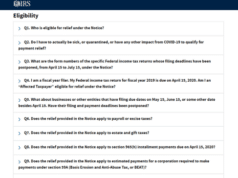
You have no doubt heard about the wildly fluctuating fortunes of cryptocurrencies like Bitcoin. Stories of people who bought low and made a fortune – and others of investors who purchased when the price was high only to see it fall dramatically.
But did you know you can trade on the price movement of cryptocurrencies without physically owning them? And that you can profit from the price falling, just as you can from it rising? That might sound far-fetched, but with crypto trading, it is entirely possible, providing you placed your money on the right side of the move.
This article gives you an outline of how to trade on cryptocurrencies and where to do so. The investment format has become popular globally, and so the best trading platform in South Africa or Australia will be just as useful to readers in the United States and vice versa. Crypto is a global phenomenon, after all.
How To Trade Crypto
The first thing you must do is find a trading platform managed by a reliable broker. Most platforms offer markets on shares, indices, commodities, and foreign exchange currencies from around the world, and some now also offer you the chance to trade in cryptocurrencies.
But on these platforms, rather than buying a Bitcoin for around $34,000 (well, a piece of a Bitcoin anyway), you can trade on the price fluctuation.
On your trading platform, you will see the current buy and sell price for Bitcoin or Ethereum, plus a selection of other well-known cryptocurrencies. Using your knowledge and research (always read up and take advice first), you will place a trade based on whether you think the price will rise or fall.
Bitcoin Daily Price Chart
Rather than having to pay the full price for one Bitcoin (which is out of reach of most), you will instead effectively bet a certain amount for every tiny shift in price, known in trading as a pip. For example, you might ‘Sell’ Bitcoin at $0.10 a pip, with the selling price set at 33970. Once you execute the trade, you make $0.10 for every digit the price falls. If the price tumbles $1,000, you make $100. Consider if you executed this trade back in April when the Bitcoin price nudged $66,500. It has lost around $32,000 since – that would have been a profit of $3,200.
Alternatively, you can go long, which means you buy at the current price with the expectation that it will rise.
While this is all well and good as a potential side hustle to make money, you can see the potential downside of crypto trading. Like any other form of trading, like buying traditional shares, if the price moves in the opposite direction to your trade, you lose money. In the example of you going short and selling Bitcoin at 33970 for $0.10 a pip, if the price rises, you’re going to lose $0.10 for every digit.
Find A Good Trading Platform
If you fancy giving crypto trading a try, then you need to find a broker with a platform that suits your needs. If you are a novice, find one that accepts small investments so you are not at risk of sizeable losses. Other than that, look for:
Big reputation for security
Select a trading platform that is well known and operates internationally. With good customer service and security with your personal data and payments, you can be sure you’re account is safe. A good choice of payment methods and fast transactions are also a big plus.
Good choice of markets
We’re concentrating on cryptocurrencies here, so make sure you have the ability to trade on crypto. But while you make your choice, be sure that your broker also offers a range of markets on shares, indices like the Nasdaq or Johannesburg Stock Exchange, traditional currency pairs (Forex), and commodities. This means you can test out other trading strategies in one place
Educational content
Even trading experts are always learning. Your broker will hopefully provide lots of free training material so you can learn strategies and read up on the latest dealing tips.
Analytical tools
Many traders deal on emerging patterns in a moving price chart. A good platform will offer free tools to make it easier for you to add lines and spot trends like the Moving Averages.
Dip Your Toe In The Water First
Like with any investment strategy, approach your first efforts at cryptocurrency with caution. Only buy and sell what you can afford to lose; otherwise, you will be under pressure and make erratic decisions that could cost you even more. Stock markets can crash, we all know that, but Bitcoin has a habit of wild price fluctuation.
Some platforms let you trade with a dummy account first so that you can see how everything works before risking any real money. And remember to read up and take advice. Get it right, and you could open the door to some decent profits.








